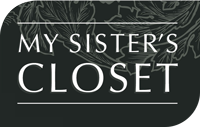
Matricide, the act of a son killing his mother, represents one of the most disturbing and tragic forms of gender-based violence. While statistically rare, it reveals a deeply entrenched intersection of mental health crises, misogyny, patriarchal values, and systemic failures. Matricide fits into the broader framework of femicide—the gender-based killing of women—and highlights societal blind spots in recognizing and addressing this unique form of violence.
The Canadian Femicide Observatory for Accountability and Justice (CFOAJ) tracks gender-related homicides and emphasizes the urgent need for systemic interventions. However, the lack of data disaggregation and limited global research specifically addressing son-to-mother killings obscure the scale and dynamics of this violence. This essay will analyze recent trends in matricide in Canada, discuss the role of misogyny and patriarchal structures in these killings, explore failures in institutional responses, compare Canadian cases to global trends, and emphasize the importance of policy reform and research to address this issue effectively
The term femicide, coined by Diana Russell in 1976, refers to the killing of women by men because they are women, rooted in misogyny and societal norms about gender roles. Over time, the definition has expanded to include feminicide, which emphasizes state accountability for failing to protect women and prosecute perpetrators.
Matricide, as a subset of femicide, remains underexamined and underacknowledged in global research. While international frameworks often include killings perpetrated by fathers, uncles, brothers, or cousins (e.g., UNODC, 2019; Weil et al., 2018), the category of sons as perpetrators remains largely overlooked. This omission is exacerbated by poor data disaggregation, making it difficult to determine the scale of son-mother killings internationally.
Emerging research suggests that parricide (the killing of a parent) is a stubborn phenomenon that remains consistent even during periods of declining homicide rates. Studies from England and Wales show that parricide averages between 18 and 22 cases per year (Bojanic et al., 2020; Holt, 2017; Miles, Condry, and Windsor, 2022). While women account for 27–30% of non-domestic homicide victims, they represent around 50% of all parricide victims, with mothers being disproportionately affected (Bojanic et al., 2020; Holt, 2017; Miles et al., 2022). Furthermore, 85–90% of parricide perpetrators are men, underscoring the gendered nature of this form of violence (Heide, 2013b; Miles et al., 2022).
This data highlights the critical need to recognize matricide as a distinct form of femicide shaped by misogyny, familial power dynamics, and institutional failures.
While matricide remains statistically rare in Canada, recent cases underscore recurring patterns of mental health struggles, misogyny, and institutional neglect:
- Pickering, Ontario (2024): A 64-year-old woman, Sheila Hercules, was assaulted and killed by her 25-year-old son. He was arrested and charged with second-degree murder.
- Toronto, Ontario (2022): Dallas Ly, 20, was charged with second-degree murder after the dismembered body of his mother, Tien Ly, was discovered. His trial revealed underlying resentment and mental health issues.
- Hamilton, Ontario (2023): Daryl Buckle, 34, was charged with first-degree murder following the death of his mother, Jacquelyne Buckle.
- Kamloops, British Columbia (2023): Brandon Donovan, 35, was charged with second-degree murder after the death of his mother, Jo-Anne Donovan.
- Halifax, Nova Scotia (2024): Jonathan Pinsky, 41, was charged with second-degree murder following the death of his mother, Delina Pinsky.
- Victoria, British Columbia (2022): Alexander James Thorpe was charged with the murder of his mother. The investigation revealed a history of untreated mental health issues and family dysfunction.
These cases demonstrate patterns of institutional failures to recognize risk, inadequacies in mental health care systems, and societal blindness to the gendered aspects of matricide.
The Role of Misogyny and Patriarchy in Matricide
Matricide cannot be understood without addressing the role of misogyny and patriarchal conditioning. Mothers are often seen through conflicting societal lenses: self-sacrificing nurturers, emotional caretakers, and moral authorities. These expectations place immense burdens on mothers while simultaneously positioning them as targets of blame and resentment.
- Scapegoating Mothers: Patriarchal values often position mothers as responsible for their sons’ failures. When men internalize societal messages about dominance and emotional suppression, their dependence on their mothers creates cognitive dissonance and fosters resentment.
- The Emotional Dependency Paradox: Sons may resent their reliance on their mothers while simultaneously feeling unable to break free from this dependence.
- Toxic Masculinity: Societal narratives framing caregiving and emotional vulnerability as feminine traits can cause sons to lash out violently when confronted with feelings of inadequacy.
- Institutional Blindness: Many systems fail to recognize the specific gendered risks mothers face when caring for adult sons with untreated or poorly managed mental health conditions.
Failures to Understand Risk to Mothers
Institutional reviews consistently highlight failures to understand and mitigate risks to mothers caring for violent or mentally ill sons:
- Failure to Identify Abuse: Incidents of property damage, threats, and previous violent outbursts were often overlooked or minimized by authorities.
- Poor Risk Assessments: In one case, a GP’s notes indicated that a son posed risks to female staff, yet he was allowed to live with his mother without any additional safety measures.
- Ignored Warnings: Mothers frequently voiced fears for their safety, and sons occasionally expressed concerns about harming their mothers, but these warnings were ignored.
- Isolation of Mothers: Mothers were often the sole caregivers, isolated from other support systems, and expected to monitor and report their sons’ behavior despite the clear risks involved.
- Psychotic Delusions: Symptoms such as persecutory ideations, command hallucinations, and Capgras syndrome were consistently identified as significant predictors of violence against mothers (Carabellese et al., 2014).
Mothers were frequently caught in a paradox of responsibility and marginalization—expected to act as primary caregivers while their safety concerns were dismissed or overlooked by professionals.
Global Trends and Comparative Analysis
Globally, matricide shares many patterns across different cultural contexts. In patriarchal societies with rigid gender norms, mothers are often scapegoated for their sons’ failures. In regions like Latin America, femicide rates remain alarmingly high, and feminicide frameworks emphasize state accountability for failing to protect women.
In contrast, Scandinavian countries have demonstrated success in reducing family violence through early intervention, mental health services, and robust social support systems. Canada can learn from these global models to address the societal and institutional factors contributing to matricide.
Recommendations for Addressing Matricide with a Focus on Support for Mothers of Adult or Youth Sons
To address matricide effectively and provide meaningful support to mothers of adult or youth sons, Canada must:
- Expand Mental Health Services for Families and Caregivers:
- Provide accessible, timely, and integrated mental health care specifically tailored for families, with targeted services for mothers caring for adult or youth sons experiencing mental health crises.
- Create specialized mental health programs that include family therapy, caregiver counseling, and crisis intervention services.
- Ensure mental health professionals are trained to recognize the unique challenges faced by mothers in caregiving roles.
- Improve Risk Assessment and Intervention Protocols:
- Develop and implement comprehensive risk assessment tools specifically focused on identifying risks to mothers of adult or youth sons exhibiting violent behavior or untreated mental health conditions.
- Ensure frontline workers, clinicians, and social service professionals are trained to recognize early warning signs of abuse, coercive control, and escalating risk in mother-son dynamics.
- Require follow-up protocols when concerning incidents (e.g., threats, property damage, violent outbursts) are reported, ensuring mothers’ concerns are taken seriously and acted upon promptly.
- Educate on Gendered Dynamics and Caregiver Burdens:
- Address societal narratives surrounding masculinity, caregiving roles, and emotional vulnerability through public education campaigns targeting boys, men, and families.
- Provide training for educators, social workers, and healthcare providers on the gendered dynamics of mother-son relationships, particularly in caregiving contexts.
- Challenge societal stigmas that discourage mothers from reporting abuse or seeking help due to fear of judgment or reprisal.
- Enhance Support Services for Mothers as Caregivers:
- Develop targeted support programs specifically for mothers caring for adult or youth sons with severe mental health conditions or behavioral concerns.
- Provide financial assistance, respite care services, and peer support groups for mothers who often bear disproportionate caregiving responsibilities.
- Establish helplines and crisis intervention services specifically designed for mothers experiencing fear or violence from their sons.
- Implement safety planning protocols for mothers living with at-risk sons, ensuring they have access to emergency housing and secure environments if needed.
- Improve Data Collection and Research on Matricide:
- Mandate the disaggregation of homicide data to specifically track matricide cases, including contextual information on perpetrators’ mental health history, caregiving dynamics, and previous warning signs.
- Conduct in-depth research on the lived experiences of mothers caring for at-risk adult or youth sons to better understand systemic gaps and inform evidence-based policy interventions.
Encourage collaboration between academic researchers, government agencies, and non-profits to analyze data trends and identify effective prevention strategies.
Matricide is not merely an isolated tragedy—it is a stark reflection of deeply entrenched societal and institutional failures rooted in misogyny, patriarchal power structures, and systemic neglect. It is a hidden form of femicide, shaped by gendered expectations that simultaneously idealize and scapegoat mothers, leaving them vulnerable to both familial and institutional violence. The invisibility of mothers as victims of femicide reflects not only societal indifference but also a state-level failure to recognize and address the risks they face.
To dismantle these harmful dynamics, Canada must boldly confront the patriarchal ideologies that normalize women’s caregiving burdens while ignoring the dangers they face in those roles. Recognizing matricide as a distinct and gendered form of femicide is not just an academic exercise—it is a political imperative. Addressing this violence requires systemic changes in mental health services, risk assessment protocols, and caregiver support systems, paired with a broader cultural shift that challenges the gendered assumptions perpetuating this violence.
Women deserve to be seen, heard, and protected—not just as mothers, but as individuals whose lives hold intrinsic value beyond their caregiving roles. Ending matricide means dismantling the structures of power and silence that allow it to persist. It is time to center mothers’ voices, prioritize their safety, and hold both perpetrators and the systems that fail them accountable. Only then can Canada move towards a society where no mother fears violence from her son, and every woman’s life is valued and protected.




